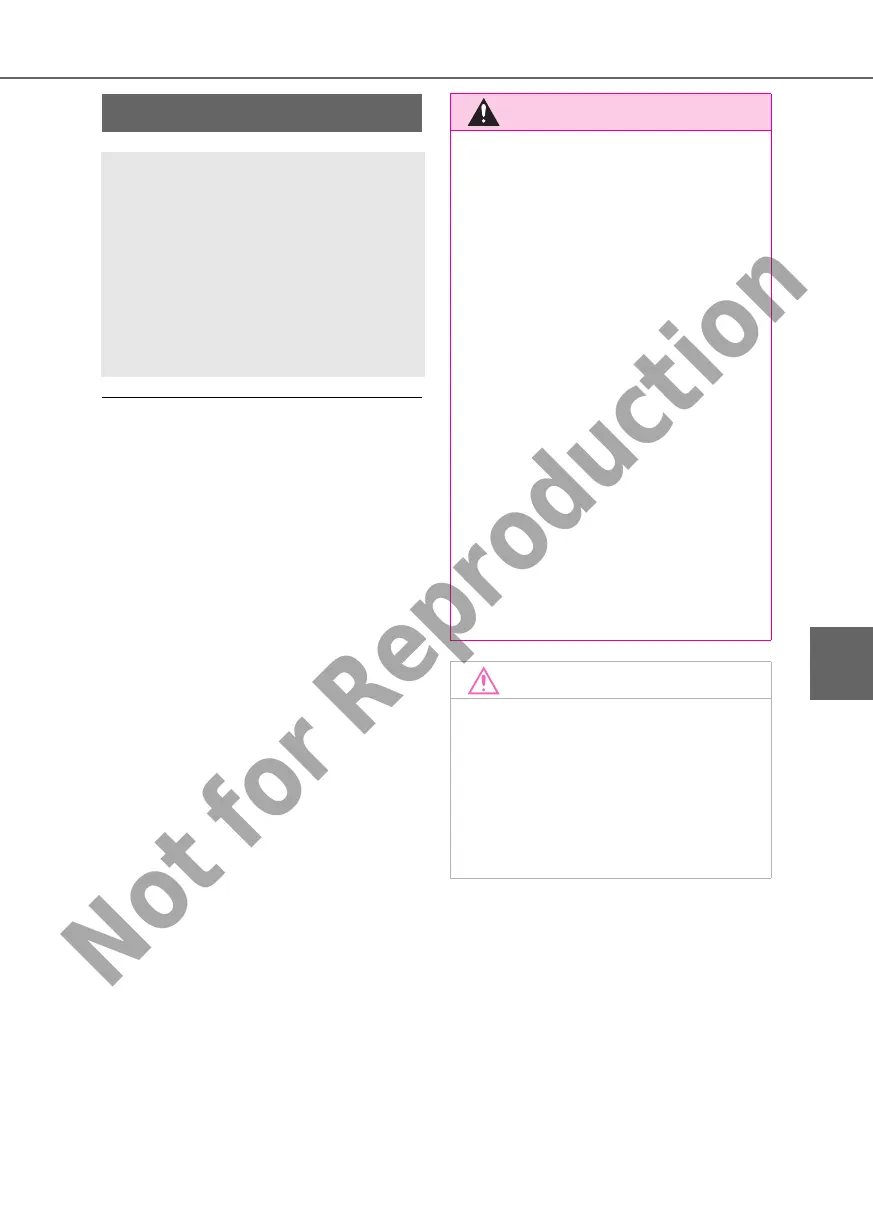333
6
6-3. Do-it-yourself maintenance
Maintenance and care
■ Effects of incorrect tire inflation
pressure
Driving with incorrect tire inflation pres-
sure may result in the following:
● Reduced fuel economy
● Reduced driving comfort and poor
handling
● Reduced tire life due to wear
● Reduced safety
● Damage to the drive train
If a tire needs frequent inflating, have it
checked by your Toyota dealer.
■ Instructions for checking tire infla-
tion pressure
When checking tire inflation pressure,
observe the following:
● Check only when the tires are cold.
If your vehicle has been parked for at
least 3 hours or has not been driven
for more than 1.5 km or 1 mile, you
will get an accurate cold tire inflation
pressure reading.
● Always use a tire pressure gauge.
It is difficult to judge if a tire is properly
inflated based only on its appearance.
● It is normal for the tire inflation pres-
sure to be higher after driving as heat
is generated in the tire. Do not reduce
tire inflation pressure after driving.
● Passengers and luggage weight
should be placed so that the vehicle is
balanced.
Tire inflation pressure
Make sure to maintain the
proper tire inflation pressure.
Tire inflation pressure should
be checked at least once per
month. However, Toyota rec-
ommends that tire inflation
pressure be checked once
every two weeks. (P.407)
■ Proper inflation is critical to save
tire performance
Keep your tires properly inflated.
If the tires are not properly inflated,
the following conditions may occur
which could lead to an accident
resulting in death or serious injury:
● Excessive wear
● Uneven wear
● Poor handling
● Possibility of blowouts resulting
from overheated tires
● Air leaking from between tire and
wheel
● Wheel deformation and/or tire dam-
age
● Greater possibility of tire damage
while driving (due to road hazards,
expansion joints, sharp edges in the
road, etc.)
■ When inspecting and adjusting
tire inflation pressure
Be sure to put the tire valve caps back
on.
If a valve cap is not installed, dirt or
moisture may get into the valve and
cause an air leak, resulting in
decreased tire inflation pressure.

